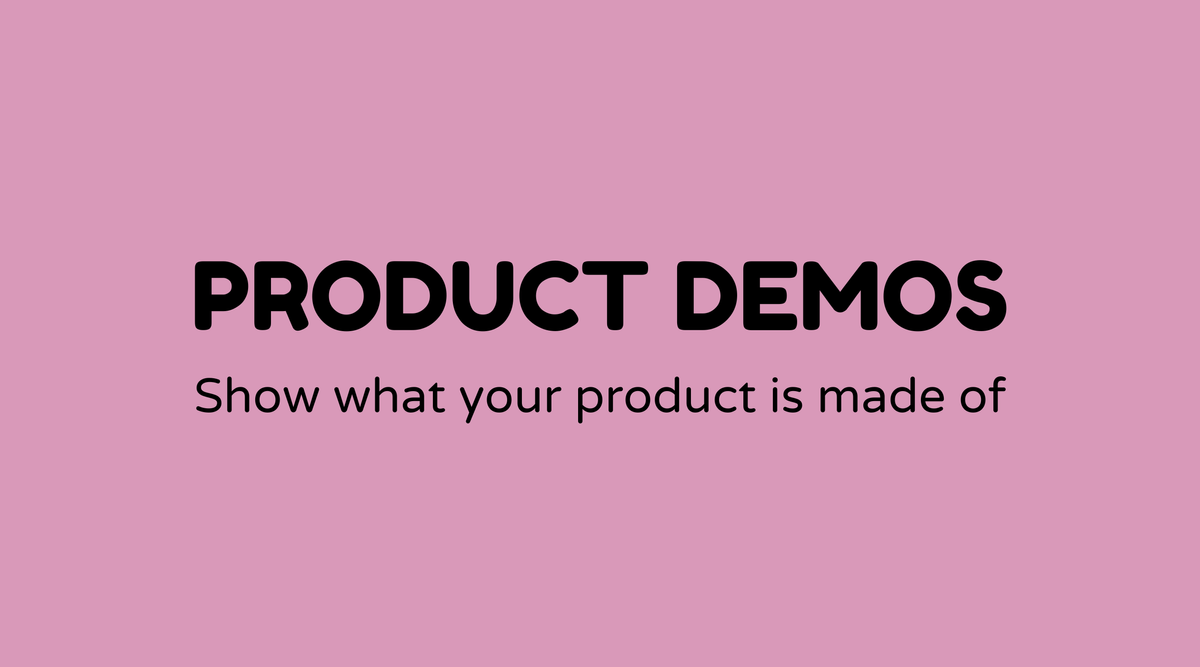Product demos

Overview of Product Demonstrations:
In today's environment, seeing is believing. This is why product demonstrations serve as an essential tool for illustrating the value of what you offer. A well-executed demonstration can engage potential customers, finalize sales, and establish trust, acting as the link between interest and purchase. In a competitive digital market, your demonstration can help distinguish your offering. Let's examine what contributes to a successful product demonstration.
Why Product Demonstrations Matter:
Product demonstrations are important because they provide a firsthand look at a product's features, advantages, and functionalities. Businesses can use demonstrations to instill confidence in uncertain buyers. While text and images may convey what a product does, actual demonstrations visually display this in practice, driving conversion rates upward.
Here’s why they’re important:
- Creates Confidence: Watching the product perform allows customers to grasp its tangible benefits.
- Builds Trust: By showcasing product reliability and authenticity, demonstrations cultivate consumer trust.
- Enhances Engagement: Video or live demonstrations capture potential buyers' attention longer than static content.
According to research by HubSpot, 54% of consumers wish to see more video content from brands they support, further highlighting the significance of product demonstrations.
What is a Product Demonstration:
A product demonstration is a presentation designed to showcase a product's features, operation, and advantages to a potential customer or user. It can be delivered as a video, an in-person presentation, or a virtual walkthrough. Demonstrations can vary from detailed step-by-step guides to brief overviews, all crafted to address questions potential buyers might have.
Key Elements of a Successful Product Demonstration:
- Clarity: The demonstration should be straightforward and easy to follow.
- Focus on Benefits: Emphasize real-world applications and advantages.
- Interactive Elements: Engaging demonstrations often encourage user interaction.
How to Conduct Product Demonstrations:
Creating an impressive product demonstration requires careful consideration. Here’s a straightforward process you can follow:
- Know Your Audience: Tailor your demonstration to address the needs and interests of your audience.
- Define the Objective: What is your main goal? To inform, persuade, or demonstrate usability?
- Storyboard the Experience: Create a clear narrative with a strong opening, informative body, and impactful closing.
- Highlight Key Features: Focus on the unique selling points—features that differentiate your product in the market.
- Include Real Use Cases: Connect the product to real-world applications.
- Make it Engaging: Keep it interactive when possible, getting your viewers involved.
- Refinement: Rehearse the demonstration and smooth out any rough spots.
An effective demonstration example can be found on YouTube’s Think with Google channel, which often features productive product demonstrations.
Sample Agenda for Product Demonstrations:
When conducting a workshop or live demonstration, a structured agenda keeps everything organized. Here’s an example:
- Welcome & Introduction: 5 minutes
- Product Overview: 10 minutes
- Feature Showcase: 15 minutes
- Live Demonstration: 20 minutes
- Interactive Q&A: 10 minutes
- Closing Statements: 5 minutes
- Feedback Collection: 5 minutes
Examples of Product Demonstrations:
Successful product demonstrations effectively bridge the gap between concept and consumer experience. For instance, Apple is known for its globally recognized product launches, while Tesla often highlights innovative vehicle features. When executed well, a product demonstration can become a memorable branding moment.
Memorable Product Demonstration Examples:
- Apple iPhone Launches: The excitement surrounding Apple's demonstrations proves their effectiveness.
- Tesla Autopilot Mode: Showcasing this feature has shifted consumer expectations.
FAQs:
How long should a product demonstration last?
- Aim for 15–30 minutes. Keep it concise yet informative.
What are the best platforms for product demonstrations?
- Platforms like YouTube, Zoom, and GoToWebinar are well-suited for online presentations.
Can product demonstrations be pre-recorded?
- Certainly. Pre-recorded demonstrations offer control over content and can be refined.
What’s the role of storytelling in product demonstrations?
- Storytelling engages viewers by connecting the product to relatable scenarios, making it more accessible.
Should product demonstrations be interactive?
- Yes, interaction encourages engagement and allows users to discover personalized advantages.
Is there a difference between a software and hardware product demonstration?
- Yes. Software demonstrations often emphasize UI/UX while hardware demonstrations focus on physical attributes and functionality.
In a visual-driven landscape, harnessing the benefits of product demonstrations could be your secret advantage. From tech giants to start-ups, the ability to showcase your product effectively can lead to success, leaving a lasting impression that resonates with consumers.



